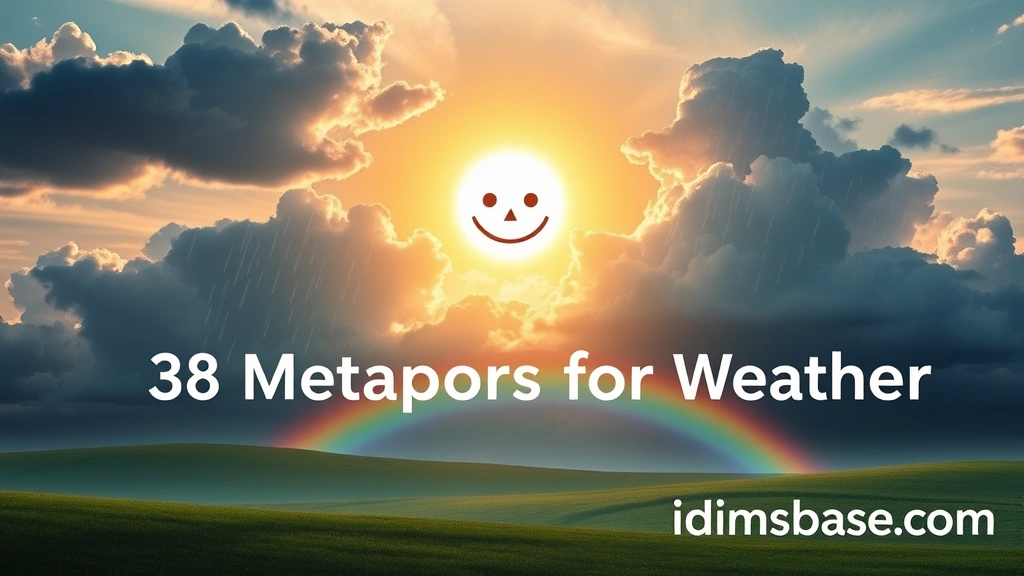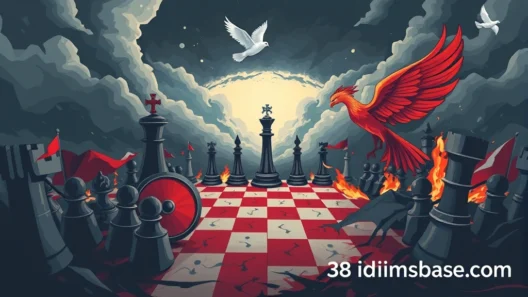Have you ever stopped to think about how we talk about the weather? It's not just about rain, sun, or snow, is it? We often use vivid language to describe it, turning simple atmospheric conditions into something much more profound. That's where metaphors come in! They help us paint a picture, express our feelings, and connect with the world around us in a deeper way.
Imagine trying to describe a sudden, heavy downpour. You could say, "It's raining hard." Or, you could say, "The sky is weeping tears of sorrow," instantly adding emotion and drama. See the difference? Metaphors are like secret ingredients in our language, making our descriptions richer and more relatable. They transform the ordinary into the extraordinary, allowing us to see weather not just as a physical phenomenon, but as a reflection of our moods, our lives, and even our dreams.
Why Do We Use Metaphors for Weather?
It’s fascinating, isn’t it? We use metaphors for weather because it’s a universal experience, yet deeply personal. A cloudy day might feel gloomy to one person and cozy to another. Metaphors allow us to capture these nuances, making our conversations about weather much more colorful and engaging. They help us understand complex feelings by relating them to something tangible and often beautiful. Plus, they make our writing and speaking so much more interesting!
38 Brilliant Metaphors for Weather
Let's dive into some truly imaginative ways we can describe the weather using metaphors. You'll be amazed at how these simple comparisons can bring a whole new dimension to your descriptions!
Sunny Day Metaphors
- The sun is a golden orb. (Simple, elegant, and highlights its brilliance.)
- The sky is a vast blue canvas. (Emphasizes its expansive, clear nature.)
- The sun is a warm blanket. (Conveys comfort and coziness.)
- Sunshine is liquid gold. (Suggests its preciousness and warmth.)
- The day is a crystal clear mirror. (Reflects clarity and sharpness.)
- The air is a gentle caress. (Highlights its softness and pleasantness.)
Cloudy Day Metaphors
- Clouds are cotton balls in the sky. (A classic, evoking softness and fluffiness.)
- The sky is a gray shroud. (Suggests gloom and concealment.)
- Clouds are fluffy sheep grazing. (A whimsical, peaceful image.)
- The heavens are a bruised eye. (Conveys a dark, unsettling appearance.)
- The sky is a blanket of gloom. (Emphasizes a feeling of sadness.)
- Clouds are whispers of forgotten dreams. (Adds a poetic, melancholic touch.)
Rainy Day Metaphors

- Rain is tears from the sky. (A common, poignant metaphor for sadness.)
- The rain is a drummer on the roof. (Highlights the rhythmic sound.)
- The sky is weeping. (Personifies the sky, expressing sorrow.)
- Rain is a silver curtain. (Describes the visual effect of falling rain.)
- The world is taking a shower. (Suggests cleansing and refreshment.)
- Puddles are shattered mirrors. (Captures the reflective quality of water.)
- The storm is a raging beast. (Emphasizes its power and ferocity.)
- Rain is liquid music. (Focuses on the soothing sound.)
Windy Day Metaphors
- The wind is a howling wolf. (Conveys its wild, strong sound.)
- The wind is nature's breath. (Suggests its life-giving, pervasive quality.)
- The breeze is a gentle whisper. (Highlights its softness and subtlety.)
- The wind is an invisible hand. (Emphasizes its unseen force.)
- The gales are a roaring lion. (Conveys immense power and noise.)
- Wind is a playful dancer. (Suggests its swirling, unpredictable movement.)
Snowy Day Metaphors
- Snow is a white blanket. (Emphasizes its covering and insulating quality.)
- The world is sugar-dusted. (Conveys a delicate, sweet appearance.)
- Snowflakes are tiny dancers. (Highlights their unique, falling patterns.)
- The ground is a pristine canvas. (Suggests its untouched, pure nature.)
- Snow is powdered sugar. (Similar to sugar-dusted, emphasizing fine particles.)
- Winter is a silent sculptor. (Describes how snow reshapes the landscape.)
Other Weather Metaphors

- Fog is a ghostly presence. (Conveys its eerie, obscuring nature.)
- Lightning is a fiery whip. (Highlights its sudden, striking power.)
- Thunder is a giant's roar. (Emphasizes its deep, booming sound.)
- The heat is a suffocating blanket. (Conveys discomfort and oppression.)
- A storm is a brewing cauldron. (Suggests intense, unpredictable forces.)
- The weather is a fickle friend. (Highlights its unpredictable and changing nature.)
Key Takeaways
- Metaphors add richness: They transform simple descriptions into vivid imagery.
- They evoke emotion: Weather metaphors help us express feelings and moods.
- Enhance communication: Using them makes your writing and speaking more engaging.
- Universal appeal: Weather is something everyone experiences, making these metaphors relatable.
- Unleash creativity: There are endless ways to describe weather metaphorically.
Frequently Asked Questions (FAQs)
Q1: What is a metaphor?
A metaphor is a figure of speech that directly compares two unlike things without using "like" or "as." It states that one thing is another to suggest a similarity, often to make a description more vivid or imaginative. For example, saying "the sky is a giant's canvas" is a metaphor.

Q2: How do metaphors differ from similes?
While both metaphors and similes compare two different things, the key difference lies in the words they use. Metaphors state that one thing is another (e.g., "the sun is a golden orb"), whereas similes use "like" or "as" to make the comparison (e.g., "the sun is like a golden orb").
Q3: Why are weather metaphors so common in literature and everyday language?
Weather is a universal experience that deeply affects our moods and activities. Using metaphors allows writers and speakers to capture these emotional and sensory impacts more effectively. They make descriptions more powerful, relatable, and memorable, helping us connect with the abstract concept of weather on a deeper, more personal level.
Q4: Can I create my own weather metaphors?
Absolutely! The beauty of language is its flexibility. To create your own weather metaphors, think about the qualities of a weather phenomenon and then compare it to something entirely different that shares those qualities. For instance, if you want to describe a gentle rain, you might think of something soft and comforting, like "the rain is a lullaby."
Q5: Do metaphors always have to be positive?
Not at all! Metaphors can convey a wide range of emotions and imagery, both positive and negative. While "sunshine is liquid gold" is positive, "the sky is a gray shroud" clearly evokes a sense of gloom. The choice of metaphor depends on the specific mood or message you want to convey.
Using metaphors for weather isn't just about sounding poetic; it's about connecting with the world around us in a more profound way. They help us express the unexplainable, share our inner feelings, and turn everyday observations into moments of beauty. So, next time you look out the window, challenge yourself to describe the weather using a new metaphor. You might be surprised at the vivid imagery you create! Keep experimenting, keep playing with words, and let your imagination soar like the wind!






